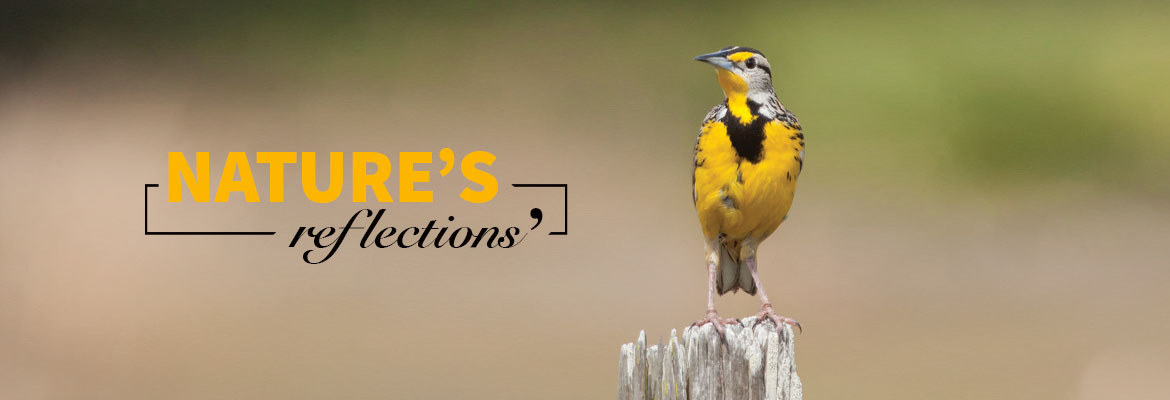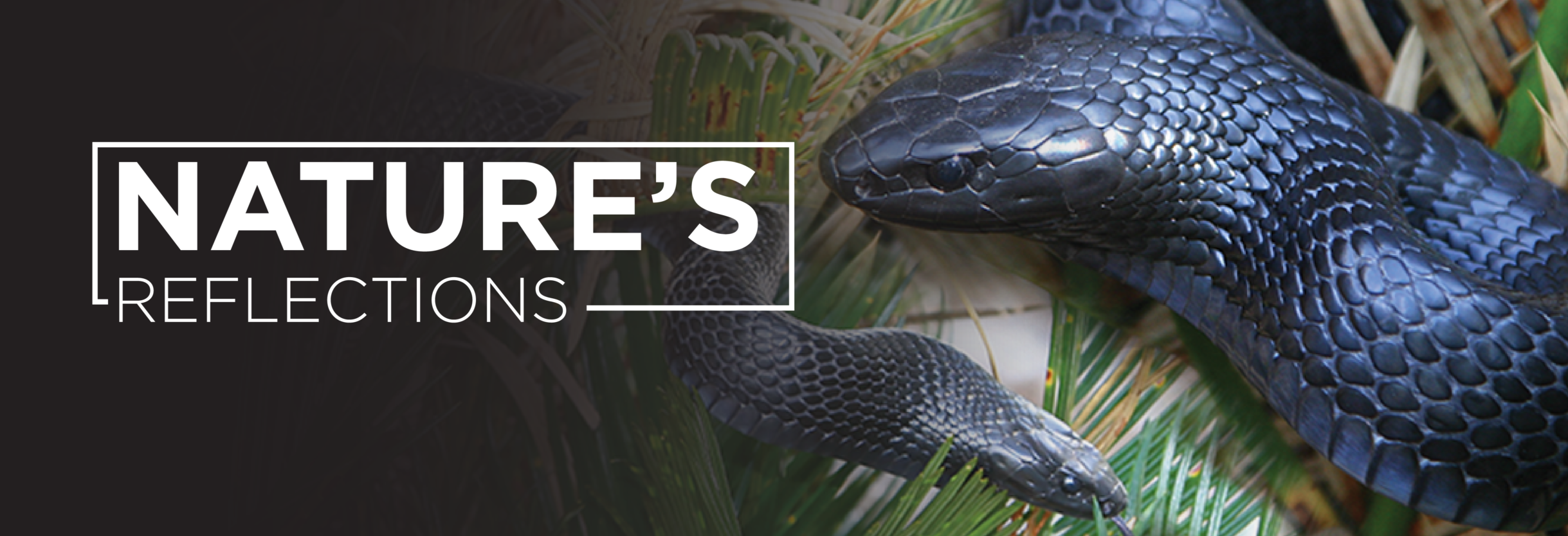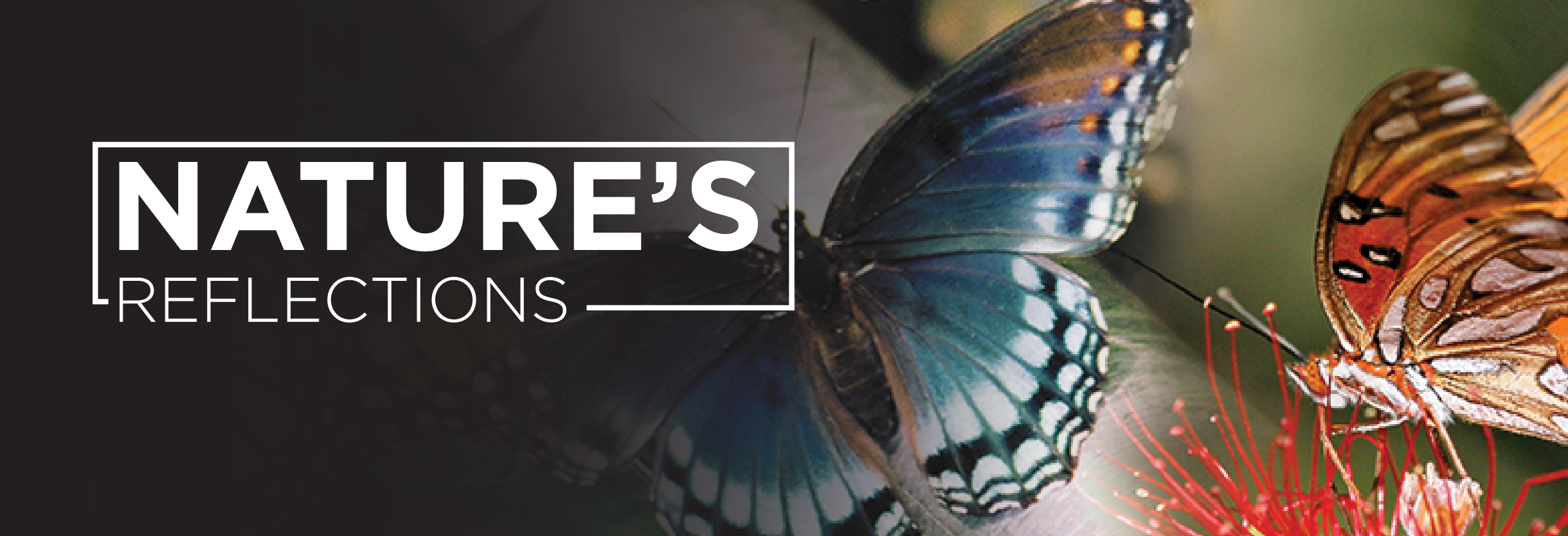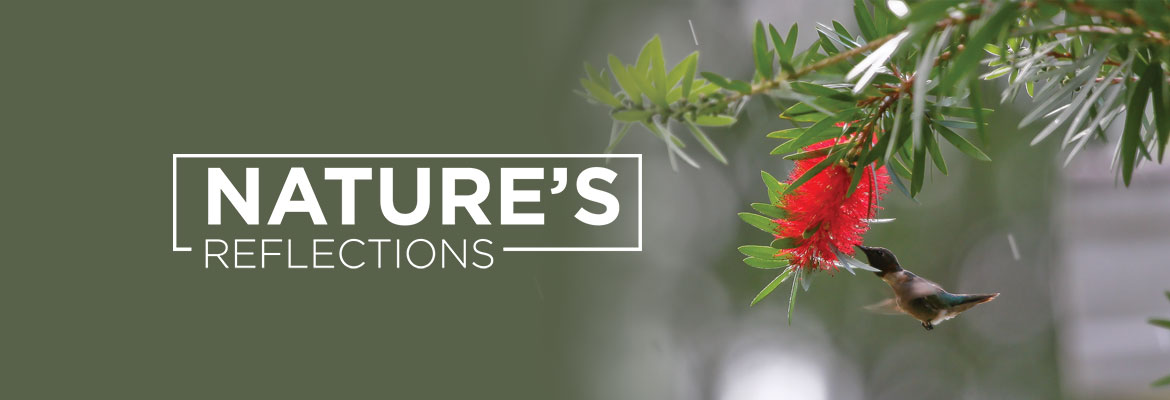Nature’s Reflections – Eastern Meadowlark
Easily identified by the black “V” on its chest
Florida’s Eastern Meadowlark (Sturnella magna) is a songbird found throughout rural areas of Florida. Its breeding range covers most of eastern North America and parts of South America. Experts say it is difficult to distinguish between the Eastern and Western species as it can be determined only by voice and location. Seventeen subspecies of the Eastern Meadowlark are documented.
Actually, the meadowlark is not a lark at all. It is a member of the blackbird family (Icteridae) which also includes cowbirds and orioles. Meadowlarks are easily identified by the bright yellow throat and belly. However, the most distinguishing mark in adults is the black “V” on its chest. It can often be seen on a fence post belting out its clear, melodious songs and whistles.
Adult birds weigh just over five ounces, are seven to ten inches tall with a wingspan of 14 to 16 inches. Both sexes are similar in size, although females are normally smaller with a shorter wingspan.
This bird prefers grassy fields, pastures, cultivated fields, golf courses and other open habitats. It is a good friend to the farmer/rancher and a bug-eating machine. Insects comprise more than 75 percent of its diet, with grains and seeds making up the balance. It is especially fond of grasshoppers and crickets, as well as insect larvae and grubs. It feeds on the ground, picking insects from the surface or probing the soil to reveal its prey. Meadowlarks also eat the seeds of many weeds.
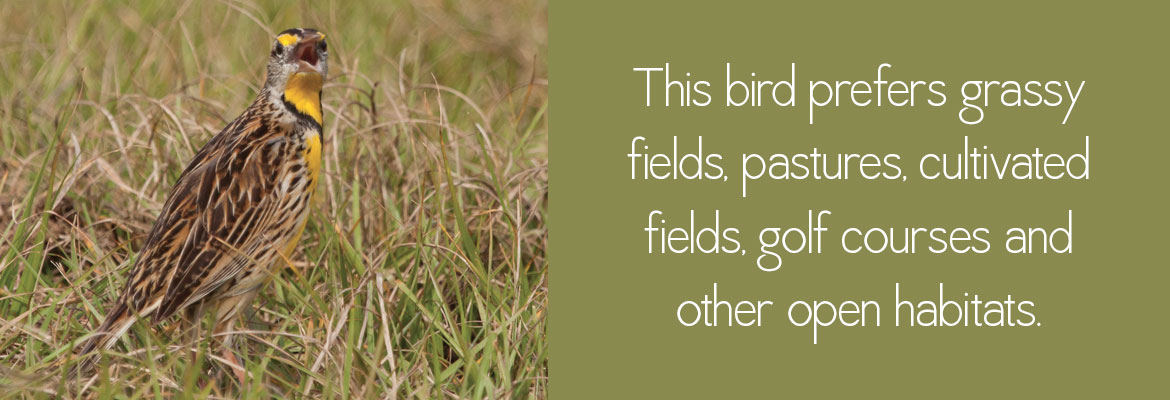
Males have two, sometimes three, mates at a time. Females build nests on the ground using soft woven grasses and hide them in the taller grass of an open field. The nest usually has an arched “roof” with a side entrance. A clutch of two to six grayish-white eggs speckled with brown and lavender may be laid any time from late March through July. Eggs are incubated by the female for 13 to 15 days. The young fledge at 12 days. The parents continue to tend them for about two weeks until they are able to fly. Juveniles are similar to adults, but the black “V” becomes prominent in adulthood. The meadowlark has been known to live ten years in captivity.
Numbers have declined drastically in recent years, probably because of habitat loss.
Column & photos by Sandi Staton – sandi.staton@gmail.com
Read the full Nature’s Reflections article in the March 2018 SECO News.



